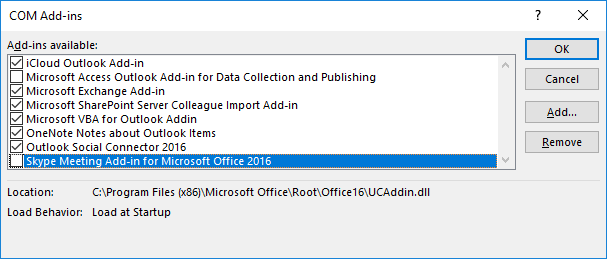

- Managed addins exchange client files install#
- Managed addins exchange client files software#
- Managed addins exchange client files code#
- Managed addins exchange client files windows 7#
- Managed addins exchange client files professional#
After some browsing and testing we found the correct settings to disable users from installing them.

We thought we had set the correct settings but it turned out we missed a few.
Managed addins exchange client files install#
Users were able to install third party add-ins in for example the Outlook client or in Office Web Access.
Managed addins exchange client files software#
Specifically for Outlook running in a browser on smartphones and non-Windows tablet devices, the following software is required for testing and running Outlook add-ins.We recently had the question to restrict users from installing Office add-ins. Client requirements: non-Windows smartphone and tablet The following are the minimum client versions of Office on Mac that support Office Add-ins.Ĭlient requirements: Browser support for Office web clients and SharePointĪny browser, except Internet Explorer, that supports ECMAScript 5.1, HTML5, and CSS3, such as Microsoft Edge, Chrome, Firefox, or Safari (Mac OS). Because Outlook on Mac uses WebKit as a layout engine to render the add-in pages, there is no additional browser dependency. Running Outlook add-ins in Outlook on Mac has the same requirements as Outlook on Mac itself: the operating system must be at least OS X v10.10 "Yosemite". Outlook on Mac, which is distributed as part of Microsoft 365, supports Outlook add-ins. One of the following as the default browser: Internet Explorer 11, or the latest version of Microsoft Edge, Chrome, Firefox, or Safari (Mac OS).Īn HTML and JavaScript editor such as Notepad, Visual Studio and the Microsoft Developer Tools, or a third-party web development tool. If you are using a Windows Server computer as your client when developing add-ins, note that ESC is turned on by default in Windows Server. Internet Explorer's Enhanced Security Configuration (ESC) must be turned off for Office Web Add-ins to work. See Browsers used by Office Add-ins for more details. To support Office Add-ins, the Office client that acts as host uses browser components that are part of Internet Explorer 11 or Microsoft Edge. Internet Explorer 11 or Microsoft Edge (depending on the Windows and Office versions) must be installed but doesn't have to be the default browser. If you have a valid Microsoft 365 subscription and you do not have access to the Office client, you can download and install the latest version of Office. Office desktop clients can be installed on premises or via Click-to-Run on the client computer.
Managed addins exchange client files professional#
Managed addins exchange client files windows 7#

POP and IMAP email accounts in Outlook don't support Office Add-ins. Self-signed certificates can be used for development and testing, so long as the certificate is trusted on the local machine. If your add-in accesses external data and services, it should be SSL-secured to protect data in transit. If you plan to run your add-in in Office on the web or publish your add-in to AppSource, it must be SSL-secured. Add-ins that are not SSL-secured (HTTPS) generate unsecure content warnings and errors during use. While not strictly required in all add-in scenarios, using an HTTPS endpoint for your add-in is strongly recommended.
Managed addins exchange client files code#
To be able to install and run any Office Add-in, you first need to deploy the manifest and webpage files for the UI and code of your add-in to the appropriate server locations.įor all types of add-ins (content, Outlook, and task pane add-ins and add-in commands), you need to deploy your add-in's webpage files to a web server, or web hosting service, such as Microsoft Azure. If you plan to publish your add-in to AppSource and make it available within the Office experience, make sure that you conform to the Commercial marketplace certification policies. For example, to pass validation, your add-in must work across all platforms that support the methods that you define (for more information, see section 1120.3 and the Office Add-in application and availability page).įor a high-level view of where Office Add-ins are currently supported, see Office client application and platform availability for Office Add-ins.


 0 kommentar(er)
0 kommentar(er)
